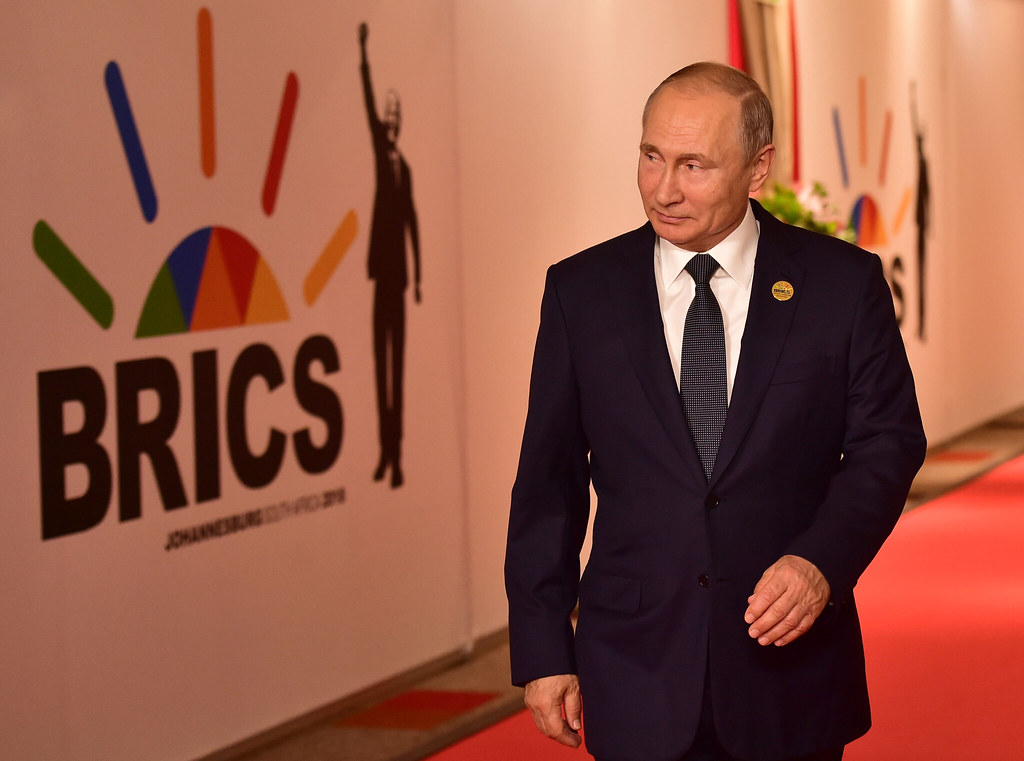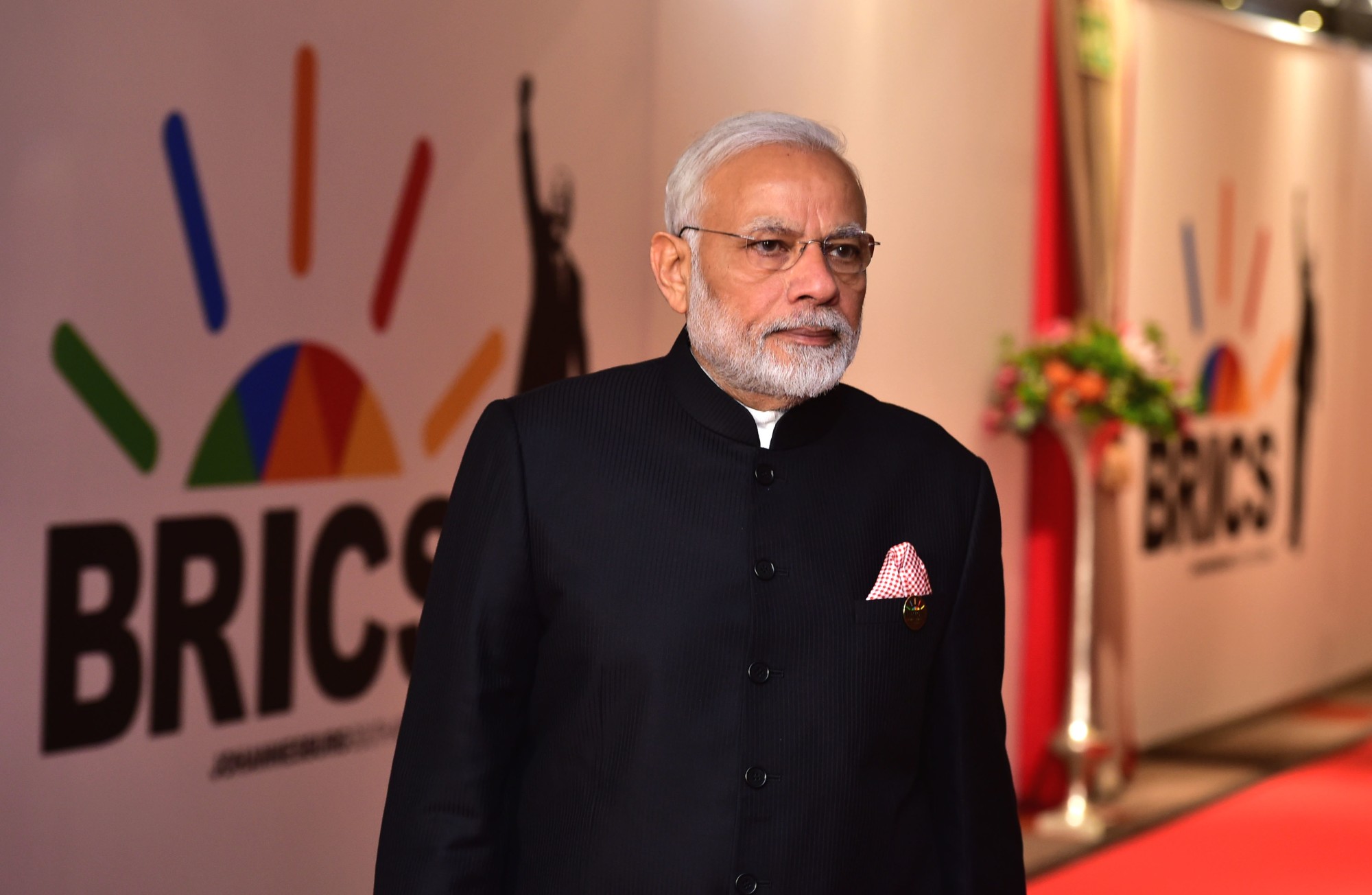World
New Member States Joining BRICS
By Matt De Vlieger · February 8, 2024

What Is BRICS?
BRICS is an acronym that stands for an association of five major emerging national economies: Brazil, Russia, India, China, and South Africa.The term was originally "BRIC" before South Africa joined in 2010, expanding it to "BRICS."
The concept of BRICS was coined by economist Jim O'Neill in 2001 to represent these rapidly developing economies that were seen as playing an increasingly significant role in the global economy. Council on Foreign Relations

2024 Expansion
Recently, the BRICS association underwent an expansion initiative announced during the 15th BRICS Summit in August 2023.South African President Cyril Ramaphosa disclosed that Argentina, Egypt, Ethiopia, Iran, Saudi Arabia, and the United Arab Emirates were invited to join the bloc, with full membership planned to commence on January 1, 2024. CGIS/South African Government

Argentina Turns Away
Argentina's change in leadership led to the withdrawal of its membership application. This expansion aimed to promote a multipolar world order, amplifying the voices of the Global South and positioning them at the forefront of the global agenda. Mídia NINJA/Creative Commons
Russia
With a population of over 140 million people, Russia has a mixed economy with a significant focus on natural resources, particularly oil, natural gas, and minerals. It is one of the world's leading energy exporters. The country also has a strong industrial base, with sectors such as aerospace, defense, and automotive manufacturing playing key roles in the economy.Following the Russian invasion of Ukraine, the country has found it more difficult to do business with the outside world do to financial sanctions. BRICS promises to provide economic alternatives to the dominant global financial system. GCIS/South African Government

India
India has a diverse economy with agriculture, manufacturing, and services sectors. It is one of the world's largest producers of agricultural products, including rice, wheat, and cotton. The country also has a rapidly growing services sector, particularly in areas such as information technology, telecommunications, and financial services.India has a population of over 1.3 billion people, making it the second-most populous country in the world. CGIS/South African Government

China
China has the largest population in the world, with over 1.4 billion people.China has the world's second-largest economy, characterized by manufacturing, exports, and investment-driven growth. The country is a leading global producer of goods ranging from electronics and machinery to textiles and steel.
China has also made significant investments in infrastructure and technology, driving economic development. CGIS/South African Government

South Africa
South Africa has a diverse economy with a mix of agriculture, mining, manufacturing, and services sectors. The country is a leading producer of minerals such as gold, platinum, and diamonds. It also has a well-developed financial services sector, including banking, insurance, and asset management.South Africa has a population of over 58 million people, making it the most populous country in Southern Africa. CGIS/South African Government

Egypt
Egypt has a mixed economy with a significant focus on agriculture, manufacturing, and services. The country is a leading producer of agricultural products such as cotton, rice, and fruits.Egypt also has a growing industrial sector, particularly in textiles, chemicals, and construction materials. The tourism industry is also an important contributor to the economy.
Egypt has a population of over 100 million people, making it one of the most populous countries in Africa and the Middle East. MEA Photo Gallery

Ethiopia
Ethiopia has a population of over 115 million people, making it the second-most populous country in Africa.Ethiopia has a predominantly agricultural economy, with agriculture accounting for a significant portion of the country's GDP and employment. The country is a leading producer of coffee, flowers, and other agricultural products. Ethiopia also has a growing industrial sector, particularly in textiles, manufacturing, and construction. SABC News Screenshot

Iran
Iran has a mixed economy with a significant focus on oil and natural gas production. The country is one of the world's largest producers of oil and natural gas, and the energy sector plays a central role in the economy. Iran also has a diverse industrial base, including sectors such as automotive manufacturing, petrochemicals, and agriculture.Iran has a population of over 80 million people, making it one of the most populous countries in the Middle East. Iran International

Saudi Arabia
Saudi Arabia has a predominantly oil-based economy, with the energy sector accounting for a significant portion of the country's GDP and government revenue. The country is one of the world's largest producers and exporters of oil.In recent years, Saudi Arabia has also made efforts to diversify its economy, with a focus on sectors such as tourism, entertainment, and technology.
Saudi Arabia has a population of over 34 million people. Russia/Kremlin

United Arab Emirates (UAE)
The UAE has a diversified and rapidly growing economy, with a focus on sectors such as oil and gas, tourism, real estate, and financial services. The country is one of the world's leading producers and exporters of oil, but it has also made significant investments in non-oil sectors to diversify its economy.The UAE has a population of over 9 million people, composed of both Emirati citizens and expatriate residents from around the world. Foreign Ministry/India